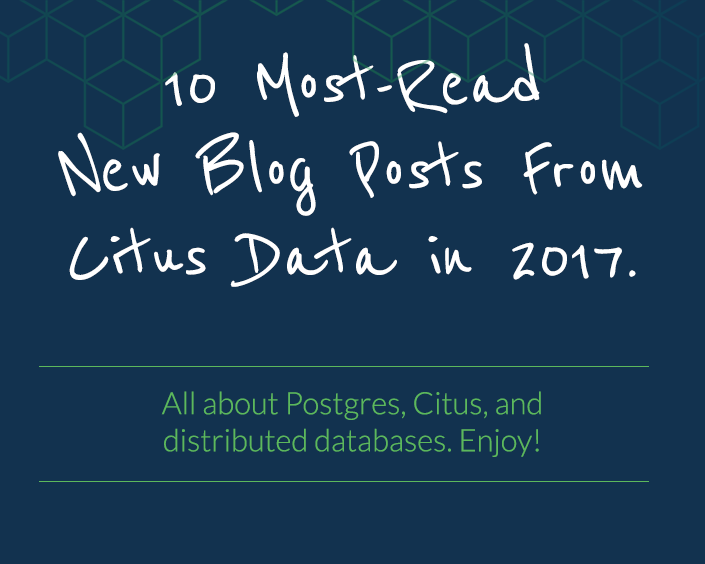POSETTE 2025 is a wrap! 🎁 Thanks for joining the fun. Missed it? Watch all 42 talks online.
Seasons each have a different feel, a different rhythm. Temperature, weather, sunlight, and traditions—they all vary by season. For me, summer usually includes a beach vacation. And winter brings the smell of hot apple cider on the stove, days in the mountains hoping for the next good snowstorm—and New Year’s resolutions. Somehow January is the time to pause and reflect on the accomplishments of the past year, to take stock in what worked, and what didn’t. And of course there are the TOP TEN LISTS.
Spoiler alert, yes, this is a Top 10 list. If you’re a regular on the Citus Data blog, you know our Citus database engineers love PostgreSQL. And one of the open source responsibilities we take seriously is the importance of sharing learnings, how-to’s, and expertise. One way we share learnings is by giving lots of conference talks (seems like I have to update our Events page every week with new events.) And another way we share our learnings is with our blog.
So just in case you missed any of our best posts from last year, here is the TOP TEN list of the most popular Citus Data blogs published in 2018. Enjoy.
Keep reading




